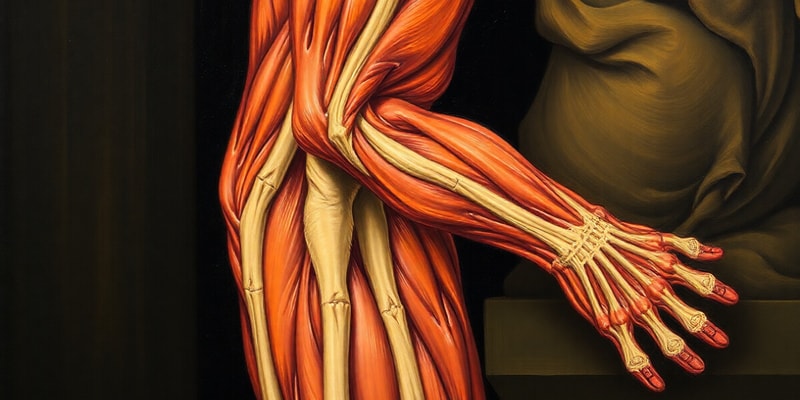Podcast Beta
Questions and Answers
What molecule helps actin attach to the head of myosin?
Calcium attaches to tropomyosin in muscle contraction.
False
What is the role of myosin in muscle contraction?
Myosin heads attach to actin filaments and pull them, facilitating muscle contraction.
The muscle contraction mechanism involves actin, myosin, and ______.
Signup and view all the answers
Match the following components to their functions in muscle contraction:
Signup and view all the answers
What is the role of ATP in the muscle contraction process?
Signup and view all the answers
Tropomyosin directly binds to actin during muscle contraction.
Signup and view all the answers
What ion is crucial for the movement of tropomyosin during muscle contraction?
Signup and view all the answers
The interaction between actin and myosin is essential for muscle __________.
Signup and view all the answers
Match the following muscle contraction components to their descriptions:
Signup and view all the answers
Study Notes
Muscle Contraction Mechanics
- Myosin heads attach to actin filaments using ATP to energize the process.
- Tropomyosin, a regulatory protein, obstructs actin binding sites in a relaxed muscle state.
- Calcium ions play a crucial role in muscle contraction by facilitating the movement of tropomyosin, allowing myosin to bind to actin.
Role of ATP in Muscle Contraction
- ATP provides the necessary energy for the myosin heads to pivot and pull on actin filaments, leading to muscle shortening.
- The interaction between myosin and actin is critical for the sliding filament theory of muscle contraction.
Importance of Calcium Ions
- Calcium ions are released from the sarcoplasmic reticulum in response to muscle stimulation.
- The influx of calcium causes conformational changes in troponin, which subsequently shifts tropomyosin, exposing actin binding sites to myosin.
Muscle Contraction Mechanism
- Actin and myosin are essential proteins in muscle contraction, with structured interactions.
- Myosin heads attach to actin filaments, a process that requires ATP (adenosine triphosphate).
- Calcium ions play a crucial role by attaching to tropomyosin, which regulates the interaction between actin and myosin.
- The binding of calcium alters the position of tropomyosin, exposing binding sites on actin for myosin attachment.
- This cycle of attachment and detachment powered by ATP enables muscle fibers to contract and produce movement.
Studying That Suits You
Use AI to generate personalized quizzes and flashcards to suit your learning preferences.
Related Documents
Description
Test your understanding of how actin and myosin interact during muscle contraction. This quiz focuses on the role of ATP and tropomyosin in this essential biological process. Ideal for students studying physiology or biology.




